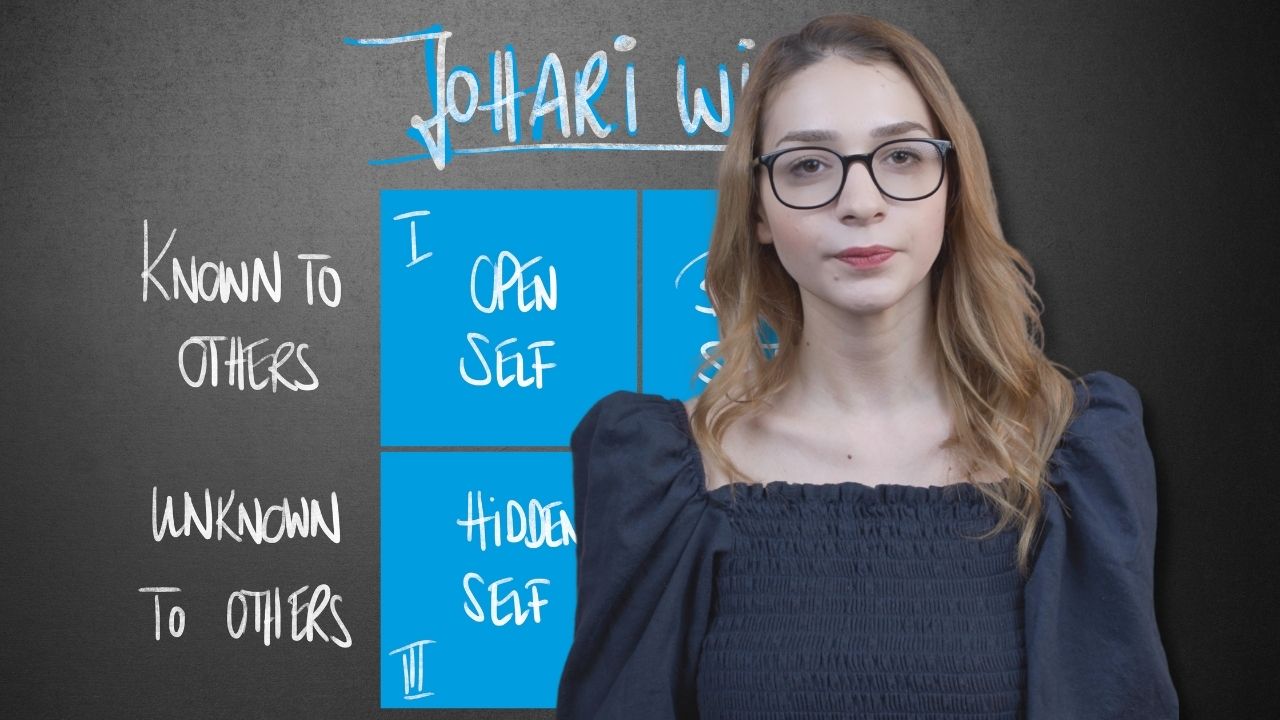
Self-knowledge is the most essential virtue necessary for one's self-realization. Having this virtue requires sincerity and originality. So we can get to know ourselves by being honest with ourselves and not being ashamed of being ourselves. Self-actualization is—inspired by Abraham Maslow—building ourselves after meeting our vital needs. Life isn't just about diplomas and careers. Diploma and career are only part of the job of self-actualization. A self-actualized person is an individual with improved psychological health. It is seen that this person uses his potential at the highest level. For a person to maximize his potential, he must first know himself.
Concepts such as self-knowledge, self-discovery, self-seeking, journey to oneself, and finding our essence are idioms related to self-knowledge. There are many ways to get to know yourself. These:
To review our personal habits and characteristics,
To determine our value judgments,
Asking ourselves what our beliefs and prejudices are,
Asking ourselves the source of the emotion (anger, sadness, joy) we are in at that moment and why.
The items we have mentioned are tasks that require determination and are time-consuming. So let us show you a fast and solid way of getting to know yourself: the Johari Window. If you want to familiarize yourself with the Johari window, please take a step back and look at yourself from the outside.
What is Self-Knowledge?
Self-knowledge identifies one's personal characteristics, emotions, habits, values, and beliefs and arranges them according to their life. Self-knowledge is not a quick process. A person discovers different aspects of him at every age, every period, every relationship, and job. To realize is to find the existing, to be aware of the current. The more self-aware a person is, the more successful he will know himself. Knowing yourself is very important for self-actualization. Man realizes himself both for himself and for society. The most essential condition for existence in society is communication. The most beautiful form of communication in social life is effective communication. To communicate effectively, it is necessary to respect people, accept people, and make people feel valued. Sharing with confidence and without exaggerating any behavior is essential for effective communication. While communicating in social life, we must communicate by being aware of ourselves and our values. In this context, when we consider the social aspect of self-realization, we understand that it is necessary to know oneself again for effective communication in social life. Because we have to open ourselves to the other side and express ourselves correctly.
What are the Ways to Know Yourself?
What will it be like to know yourself? I can hear your question. Social scientists think that there are three ways to know oneself. It is necessary to pass through each of these roads in turn. We cannot know ourselves by using only one way. Ways to know yourself:
Self grasp
Self-respect/confidence
Self-awareness
Self Comprehension:
People's thoughts, feelings, beliefs, and attitudes. In other words, it is to determine how much you know about them. Self-awareness is a situation related to one's stance in social life. Because when we ask what the intermediaries that enable a person to understand himself are, we come across 4 sources:
The image of man put forward by others,
Comparisons between oneself and others,
What people learn through culture,
Evaluation of one's own thoughts and behaviors.
These resources show us that we need to look at ourselves internally and externally for self-understanding. Let's turn these resources into questions:
What is your image in social life? Calm/ Nervous/ Cheerful
Are you active or sluggish compared to the people around you?
Do you have value judgments that you cannot give up? What are they?
Self-Esteem/Confidence:
There is a situation that I have observed in recent years. People don't respect themselves. I'm not talking about self-confidence. I'm talking about self-respect. Self-esteem is a person's physical, psychological and social self-care skills. You can say how the adult individual has not acquired self-care skills. In childhood, people who were not valued in their families did not love themselves. Those who do not value themselves do not respect themselves. Those who do not respect themselves do not care about self-care. Self-care skills can be listed as eating healthy, doing sports, dressing correctly, drawing our boundaries against our environment, creating a relaxation area and time for ourselves during the day, and establishing good friendships. People who do not care for themselves turn into aggressive or passive-aggressive personalities. An aggressive person is a person who cannot communicate effectively and accurately with their environment.
On the other hand, a passive-aggressive person acts as if everything is normal because he is afraid of reacting to his environment, gives short and cold answers, and is constantly told in his own way. That's why self-care people are self-respecting people. Self-respecting people trust themselves. Self-confident people are successful in verbal and nonverbal communication and respected in social life. In other words, self-respect brings with it respect from society.
Distinguishing Yourself:
A person can understand himself about what he is doing and why. So naming his feelings is being able to explain them.
Why am I sad? Is there something I'm missing too?
Why am I angry? Or am I not safe?
What happens when I get sad/angry?
What are my mind and body saying when I have these feelings?
Asking these questions is an excellent way to deal with our current feelings. In addition, it makes people aware of themselves by scrutinizing them as if they are in an emotional surgery to get to know themselves. Another method of self-awareness is the Johari Window.
What is the Johari Window?
The Johari Window charts the sharing of the "self" in a relationship. Developed by Joe Luft and Harry Ingram in 1955, the Johari Window takes its name from combining the first syllable of the words Joe and Harry. The Johari Window charts a person's willingness to open up and openness to feedback, both in their relationship with themselves and with people in their community.
Consider, for example, our close relationship with our friend John. First, my relationship with John is the vertical line; The horizontal line shows how willing I am to explain or share my personal thoughts with John. Next, I draw the other horizontal and vertical lines, which shows how open I am to receiving feedback about myself from John, directly opposite the different lines and forming a square. Now I can open the Johari Window of my relationship with John. This window consists of 4 areas:
Open: My attitudes, feelings, and behaviors are what John and I know about me. In other words, it is all my knowledge and situations that I am not afraid to share in its name.
Secret: I know about myself, but John does not know about me. It expresses the sides of me that I consciously hide from John. For example, I hide my family from John because I am ashamed of poverty. Behind the shame of being poor, there is also my fear of being poor and being excluded and belittled by John behind the humiliation of being poor. Those in the hidden area will come out into the open when I make peace with myself.
Blind: These are my attitudes, behaviors, and habits that John knows about me, but I am not aware of myself. For example, I am stingy, but I am not aware of it. John is mindful of my stinginess. Emotions such as anxiety, jealousy, and fear are included in this area. People with a large blind spot are selfish, defensive, closed to criticism, skeptical and one-sided communication. Their empathy is weak. They fail at effective communication. For effective communication, the blind area must be narrowed.
For this reason, people with a wide blind area can narrow their blind spots by getting feedback from other people. For this, you need to be open to criticism. As a person gets to know himself, his blind area narrows.
Unknown: The aspects and behaviors that John nor I know about me. This space is dark, both closed to myself and close to others. Freud says that this area is unconscious. This area includes repressed emotions, unrecognized fears, weaknesses, or talents that we may not discover because of a lack of education and self-confidence. People with a wide field of unknowns often lack self-confidence or are inexperienced.
If you ask what area should be more comprehensive in the Johari Window of people with healthy psychology, of course, we would say open space. The wider the available space, the more it shows that we are in a healthy psychological structure. But the open area does not expand 100%. No matter how much a person opens himself up, he will still have hidden, blind, and unknown areas. I drew the Johari Window of myself and my relationship with John, explaining what the fields mean. Now it's time for Johari Window to solve the test and calculate our score. With the points we calculate, we determine the boundaries of the 4 areas within the Johari Window. We are trying to get to know ourselves based on the information given above.
We wanted to know ourselves to realize ourselves. First of all, we started to respect ourselves by learning self-care skills. Respecting ourselves gave us self-confidence. With that courage, we entered the business of self-awareness. Here we compared ourselves to people in society. First, we found parts of the culture we live in. Then we interpreted our own thoughts and behaviors. This interpretation made us operate on our emotions. And we realized ourselves. We opened a window for ourselves, both inside and outside. We tried to get to know ourselves by looking through the Johari Window. We asked questions, got points, drew the boundaries of our fields. We opened the Johari Window. Oh, let's see what:
"You don't call me, neither am I,
There is only me, I drink from me" (Yunus Emre)
Knowing yourself through the Johari Window is (is) opening yourself up to both yourself and people.
Frequently Asked Questions
What is Self-Knowledge?
Self-knowledge determines one's characteristics, emotions, habits, values, and beliefs and organizes them according to their life.
What are the Ways to Know Yourself?
Self-awareness, Self-esteem/confidence, Self-awareness.
What is the Johari Window?
The Johari Window shows the sharing of the "self" in a relationship. Developed in 1955 by Joe Luft and Harry Ingram, the Johari Window takes its name from combining the first syllable of the words Joe and Harry. The Johari Window shows a willingness and openness to be open to feedback, both in their relationships with and with people in their community.
